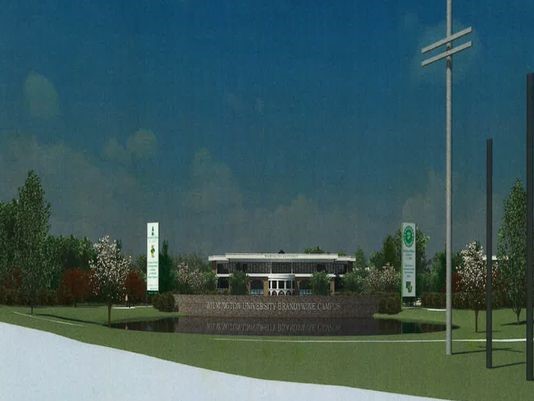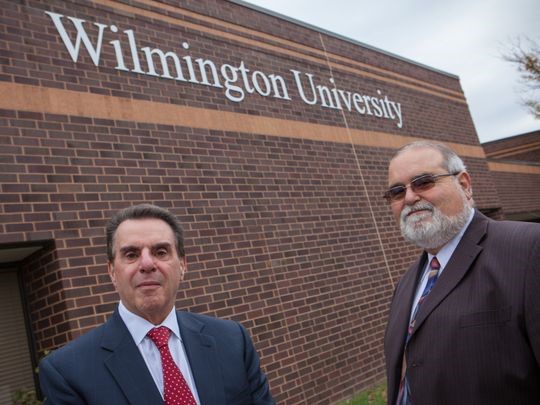Contact - Volunteer - Contribute - (302) 468-6024

|
||||||||||||||||||||||||||
| Bob Weiner News | ||||||||||||||||||||||||||
|
5/5/2016 New Castle County Councilman Robert Weiner declined to indicate whether he supports a waiver, but said he is confident in the university's ability to reduce traffic by staggering class times. Only three waivers have been granted since the county reformatted the process in 2000. Christiana Care Health System in 2002 received one to accommodate a 1.1 million-square-foot expansion of Christiana Hospital. Two years earlier, the DuPont Co. was also granted a waiver for its Experimental Station in Alapocas. Weiner sponsored legislation that outlined the traffic mitigation and monitoring agreements. He said previously waivers were given out "on a political basis like candy." Wendie Stabler, Wilmington University attorney: “I'm confident of our ability to meet the standard and make a compelling case for the wavier.” In 2000, AstraZeneca received a waiver to build its Fairfax headquarters larger than traffic rules would have allowed. The project also is on U.S. 202, a few miles from the Wilmington University site. The mitigation efforts were later hailed by national traffic experts as a successful model, pulling about 1,000 vehicles off the road at peak hours. Weiner said the waiver not only helped with traffic, it also helped with recruitment for the company. "What they found was the millennials they were seeking, the best of the best employees being sought by other employers as well wanted to come to a community where they could bike or walk to work," Weiner said. Traffic impact issue in Concord Pike campus planXerxes Wilson, The News Journal 7:54 p.m. EDT May 5, 2016 200,000-square-foot Wilmington University project being developed in Brandywine Hundred  Story Highlights • Wilmington University is planning a campus on 41 acres of undeveloped land on U.S. 202. • The school is seeking a traffic waiver from New Castle County. • Officials say they are exploring options for less costly measures. Wilmington University’s plans for a 200,000-square-foot campus on congested U.S. 202 may be allowed to advance, even though traffic volumes created would further surpass New Castle County development rules. Under county rules, developers have to pay for road improvements if traffic projected from their project will slow the flow of vehicles through nearby intersections beyond a certain level. The private school based near New Castle is awaiting county approval to build three, three-story buildings on a 41-acre cornfield at Beaver Valley Road in Brandywine Hundred. The project, the largest in the 47-year history of the institution, would serve 1,000 students and 250 employees. The most expensive improvements are acquiring land and adding lanes. But university officials are arguing it would be too expensive to fix the intersection of Beaver Valley Road and Concord Pike and may ask for a waiver. Wendie Stabler, an attorney for the university, said they may approach the County Council for an exemption in the coming months if an inexpensive solution to fix congestion is not found. Some options include changing how lanes are configured. An intersection is considered failing when it takes more than 55 seconds to pass through at peak traffic hours. Left-hand turns usually are the longest. Stabler said traffic projected to come from the campus will only marginally increase wait times at the already sluggish intersection. "What we are talking about is a matter of seconds," Stabler said. "You are talking about such a small difference that it could be fixed through mitigation.”  Jack Varsalona, president of Wilmington University with Vernon Green, chief operating office of Woodlawn Trustees are shown on Oct. 30, 2014, when they announced plans for a campus in Brandywine Hundred. The project is being developed on U.S. 202. (Photo: ROBERT CRAIG/THE NEWS JOURNAL) The project, announced in November 2014, would be the university’s 15th campus in Delaware, New Jersey and Maryland. The school, which has quickly increased enrollment in recent years, has about 20,000 students in 52 degree programs. The campus is being planned on a parcel that was owned for decades by Woodlawn Trustees Inc. of Wilmington, in an area that has seen rapid growth and business development. Sandra Harvey has lived in Devonshire less than half a mile from the intersection for about 35 years. She said she's watched and waited as red light after red light slows traffic on the busy stretch through Brandywine Hundred. She said county officials should proceed with caution as not to further slow Concord Pike. "The red lights back up into each other. It is just red light, red light, red light and it backs up," Harvey said. "The lefts back up and nobody moves. It can be gridlock." A waiver from the rules will require approval from County Council and Executive Thomas P. Gordon. In order to get that exemption, the university will have to agree to take steps to reduce traffic generated by its new development during peak congestion hours by 15 percent. Stabler said a university campus has the latitude to reduce its traffic burden on roads during those morning and evening peak hours. "We are very optimistic that we will exceed that benchmark," Stabler said. "Class times will be staggered and will not be scheduled to occur during the morning or evening period." The university also must pay a bond to the state that can be tapped if efforts to reduce traffic burdens are not taken. Stabler said the university hopes to have final approvals for the project by late fall. The state will also audit the efforts during a two-year period. The school also would be required to have real-time information about bus routes and transportation options other than cars. Stabler said the university will provide other incentives for those who come to school together or take transit and provide opportunities for employees to work remotely. "I'm confident of our ability to meet the standard and make a compelling case for the wavier," Stabler said. The plans represent an eight- to nine-year build out that will likely be constructed in three phases. The timing of those phases will be dictated by the university’s growth, Stabler said. The full designs dictate that buildings, parking lots, roadways and sidewalks will occupy about 12 acres of the property, with open space remaining on 29 acres of the 41-acre tract. Plans call for three buildings framing an existing wooded area and pond. The university wants to maintain that wooded and wet area as something pleasant for students to look at, officials have said. The university’s Du Pont Highway campus in New Castle will remain the main campus and host top administrative offices. The plot has been eyed by developers in the past as open space along Concord Pike becomes rarer. In 2007, Stoltz Real Estate Partners proposed a 237,000-square-foot mixed-use shopping center with a Whole Foods, 86 residences and 120-room hotel site on the plot. That proposal was eventually torpedoed by traffic concerns. Harvey, the Devonshire resident, said the university is the "lesser of two evils" when compared to the Stoltz mall. She also is eagerly watching development plans for the 111-acre Brandywine Country Club, where prominent local developer Louis Capano III, principal of LC Homes in Wilmington, is planning a 554-unit residential development. "That one is really a hot button," Harvey said. "That could really mess Shipley Road up." Gordon in a statement said it is too early to comment on the potential for a Wilmington University waiver. New Castle County Councilman Robert Weiner also declined to indicate whether he supports a waiver, but said he is confident in the university's ability to reduce traffic by staggering class times. The traffic rules are outlined in county building code, and have been an ongoing source of friction with business leaders and developers. The redevelopment of the shuttered Avon Products distribution facility on Ogletown Road near Newark into retail and residences has been nearly sidelined by required expensive improvements at nearby intersections. It also was a factor in the failed Barley Mill Plaza development proposed in Greenville. Only three waivers have been granted since the county reformatted the process in 2000. Christiana Care Health System in 2002 received one to accommodate a 1.1 million-square-foot expansion of Christiana Hospital. Two years earlier, the DuPont Co. was also granted a waiver for its Experimental Station in Alapocas. Weiner sponsored legislation that outlined the traffic mitigation and monitoring agreements. He said previously waivers were given out "on a political basis like candy." In 2000, AstraZeneca received a waiver to build its Fairfax headquarters larger than traffic rules would have allowed. The project also is on U.S. 202, a few miles from the Wilmington University site. The mitigation efforts were later hailed by national traffic experts as a successful model, pulling about 1,000 vehicles off the road at peak hours. Weiner said the waiver not only helped with traffic, it also helped with recruitment for the company. "What they found was the millennials they were seeking, the best of the best employees being sought by other employers as well wanted to come to a community where they could bike or walk to work," Weiner said.  Wendie Stabler, Wilmington University attorney: “I'm confident of our ability to meet the standard and make a compelling case for the wavier.” Contact Xerxes Wilson at (302) 324-2787 or xwilson@delawareonline.com. Follow @Ber_Xerxes on Twitter. Have news? Please contact me! |
Give Bob a "like" on Facebook: |
|||||||||||||||||||||||||
|
||||||||||||||||||||||||||
|
||||||||||||||||||||||||||
Paid for by Friends of Bob Weiner - www.BobWeiner.com - (302) 468-6024 - Volunteer - Contribute |
 Subscribe to RSS feed
Subscribe to RSS feed